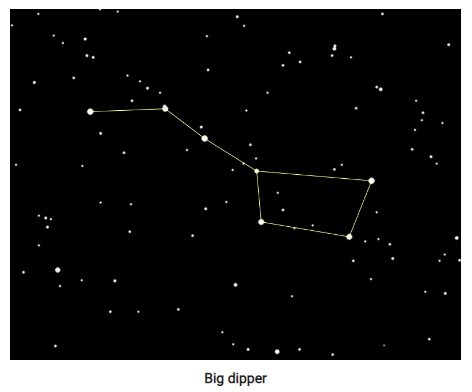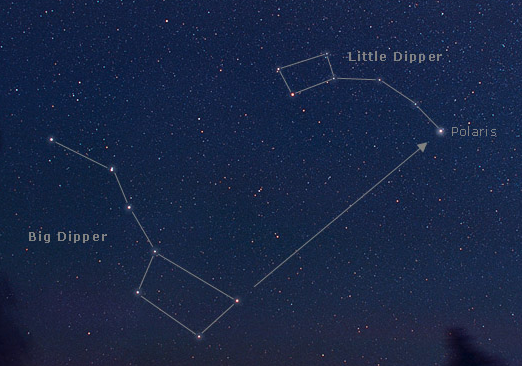How did the Star Constellations Get their Names
Constellations
Many a times certain groups of stars seem to form a recognizable pattern in the night sky. These are called constellations. These were named by the ancient people after animals and mythological characters. There are as many as 88 constellations. You can easily identify some constellations even with the naked eye. Some well-known constellations are Ursa Major, Ursa Minor, Cassiopeia, and Orion.
The stars of a particular constellation are not necessarily close to one another. They appear to be close from our point of view, i.e., from the Earth.
Ursa Major
It is also called the Great Bear. One part of the Ursa Major consisting of seven stars is fairly easy to spot in the night sky. This group of stars is called the Big Dipper or ‘Vrihat Saptarshi’, If we join these seven stars with imaginary lines, the figure obtained looks like a big ladle. If an imaginary line joins the two stars at the edge of the ladle, it will point to the Pole star (Polaris).

Ursa Minor
It is also called the Lesser Bear. One part of this constellation comprising a group of seven stars is called the Little Dipper or ‘Laghu Saptarshi’. The famous star Polaris (North star) is in this constellation. This constellation is faint and difficult to spot.

Sometimes, within a constellation a small number of stars may form a recognizable pattern, like a separate entity. This is called an asterism. Common examples of asterism are the Big Dipper in the constellation Ursa Major and Little Dipper in the constellation Ursa Minor.
Cassiopeia
This constellation is visible from the Northern Hemisphere. A few bright stars of the constellation make it look like an ‘M’ or a ‘W’, The interesting thing about Cassiopeia is that the constellation contains several star clusters, one of which contains hundreds of stars. It also contains two planetary nebulae (clouds of gas).

Orion
This is one of the most prominent and easily identifiable constellations in the night sky, As you can see in the figure, if we join the stars of the constellation with imaginary lines, the resulting figure looks like a hunter with a bow. Prominent stars of this constellation are Betelgeuse and Rigel. Betelgeuse, also called Alpha Ori, is one of the 20 brightest stars in the sky and one of the biggest stars known to us. Rigel, which is the brightest star in the Orion constellation, is the sixth brightest star in the sky.
The brightest star in the night sky, Sirius, is very easy to locate with the help of the constellation Orion. To locate Sirius, look at the three stars at the ‘waist’ of the hunter (i.e., Orion constellation) and move your eyes to the left, along the line of the three stars. You will see a very bright star, this is Sirius.

